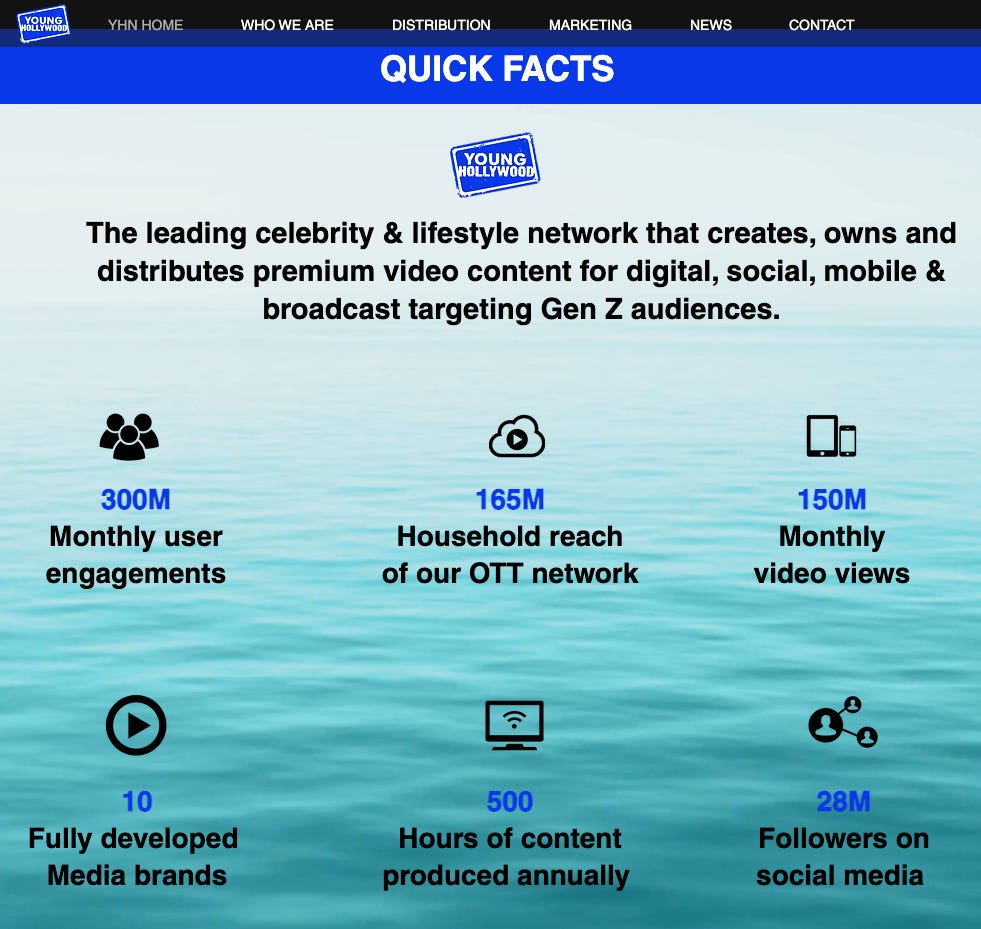
Podcasters buy their popularity
And other ways to artificially increase audience.
Months ago, a company called Deepsee published an exposé of a traffic and audience generation strategy called “reward traffic.” The piece was picked up by Bloomberg just this week.
Their research alleges that companies like iHeart have been juicing their podcast rankings by purchasing “rewarded” downloads from an ad network called Jun Group. In Deepsee’s thoroughly documented report, they found multiple iHeart URLs used as creative and traffic landing pages such as:
https://www.iheart.com/podcast/256-bloomberg-surveillance-30972795/episode/surveillance-market-timing-with-bitterly-podcast-98773848/
It does not appear that iHeart was alone in these allegations. There are many publishers trading and buying this traffic. A-L-L-E-G-E-D-L-Y
How does it work?
Respect the game, bro. The elegant simplicity of this hustle.
- A regular person playing a popular game on their phone loses or needs to “buy” another life to keep playing…
- OR…they can watch a 15-30 ad and be rewarded with a life/respawn for free.
- Only, it is not really an ad they have to watch. Instead, an entire webpage or media player is loaded up on their screen.
- The podcast episode is downloaded and begins to play.
- After the 15 or 30-second time requirement is met, the user can tap-to-continue back into their game.
See it in action here:
The example in the video above shows an episode of content from Young Hollywood loading up while the user waits for the prescribed amount of time.
So what?
Let’s dig a little deeper. Here’s what Young Hollywood publically claims about its reach.

300M monthly “user engagements” and “150M monthly video views.” I wonder how many of those are sourced from reward traffic. 🥸
From the Bloomberg article:
Jun Group’s main podcast client is IHeart, the maker of shows from Will Ferrell, Charlamagne tha God and Shonda Rhimes. According to a person familiar with the effort, the radio company, which bills itself as the top podcast publisher globally, has shelled out more than $10 million and gained approximately 6 million unique listeners per month through these ads since 2018. The company primarily runs its in-game campaigns at the beginnings and ends of months. The impact can be seen on the publicly available charts produced by Chartable, a podcast marketing company owned by Spotify Technology SA.
If you purchased ads (audio, display, or video) from any publishers engaged in this practice, there is a chance your ad served to this “rewarded” audience without your knowledge.
Reward vs Incentive
If you are wondering why the term reward is used instead of the word incentive…well…you’re not alone. It turns out there is a barely perceptible difference.
Technically speaking, incentivized traffic involves some sort of cash compensation. Or things like gift cards, etc.
Rewards are considered non-monetary values like lives or “coins” in a video game.
What’s the reason for this nuance? You guessed it…advertisers. We really know how to muck things up.
The programmatic industry and broader digital marketing community deployed voluntary standards for incentivized traffic. It has been around for years.
Incentivized traffic is supposed to be declared outright in a programmatic bid request. This allows advertisers to simply opt out of buying incentivized impressions.
Reward traffic is also supposed to be declared but doesn’t sound as bad as “incentivized,” does it?
In both cases, compliance is a joke. Anyone paying attention can see that incentivized, and reward traffic goes into the programmatic marketplace undeclared all the time.
What can advertisers do to protect themselves?
Do not expect your verification provider to protect you from this. They might catch the most blatant examples, but most of this traffic goes unflagged.
The reason this traffic is incredibly hard to detect is that it dodges all of the usual landmines.
- It is a real human on the other end, not a bot.
- It is on a real user’s device, not a server farm.
- It is 100% viewable because the user sits and looks as the whole landing page while the timer ticks away.
- The page comes from an otherwise legitimate site or domain.
Instead, you need to take proactive steps.
First, your contracts should have explicit language stating that both incentivized and reward traffic is not acceptable. Any impressions generated from incentivized or reward traffic should be credited back at full cash value.
Second, ask your media partners and suppliers if they purchase any reward or incentive traffic. If they say “no,” they should have no problem signing an agreement stating that they will refund you if found otherwise.
Third, know your sellers. Your programmatic buys should be confined to an inclusion list of known sellers. It is a myth that inclusion lists kill scale. The only scale that is killed comes from longtail sites and bad actors. Among those sellers, make sure each declares their policy on incentivized and reward traffic.
Wrap up
The more you investigate the digital marketplace, the more you find that the gray areas are the biggest problem we face.
Is reward traffic, by itself, a type of ad fraud? Not really.
Does it feel like you were duped? Kinda.
Knowing this, would it change your perception of the podcasts that scream to the top of the charts out of nowhere? Absolutely.
Support Independence
Getting the FREE AdLingo newsletter supports independent commentary, education, and insight into digital advertising.







